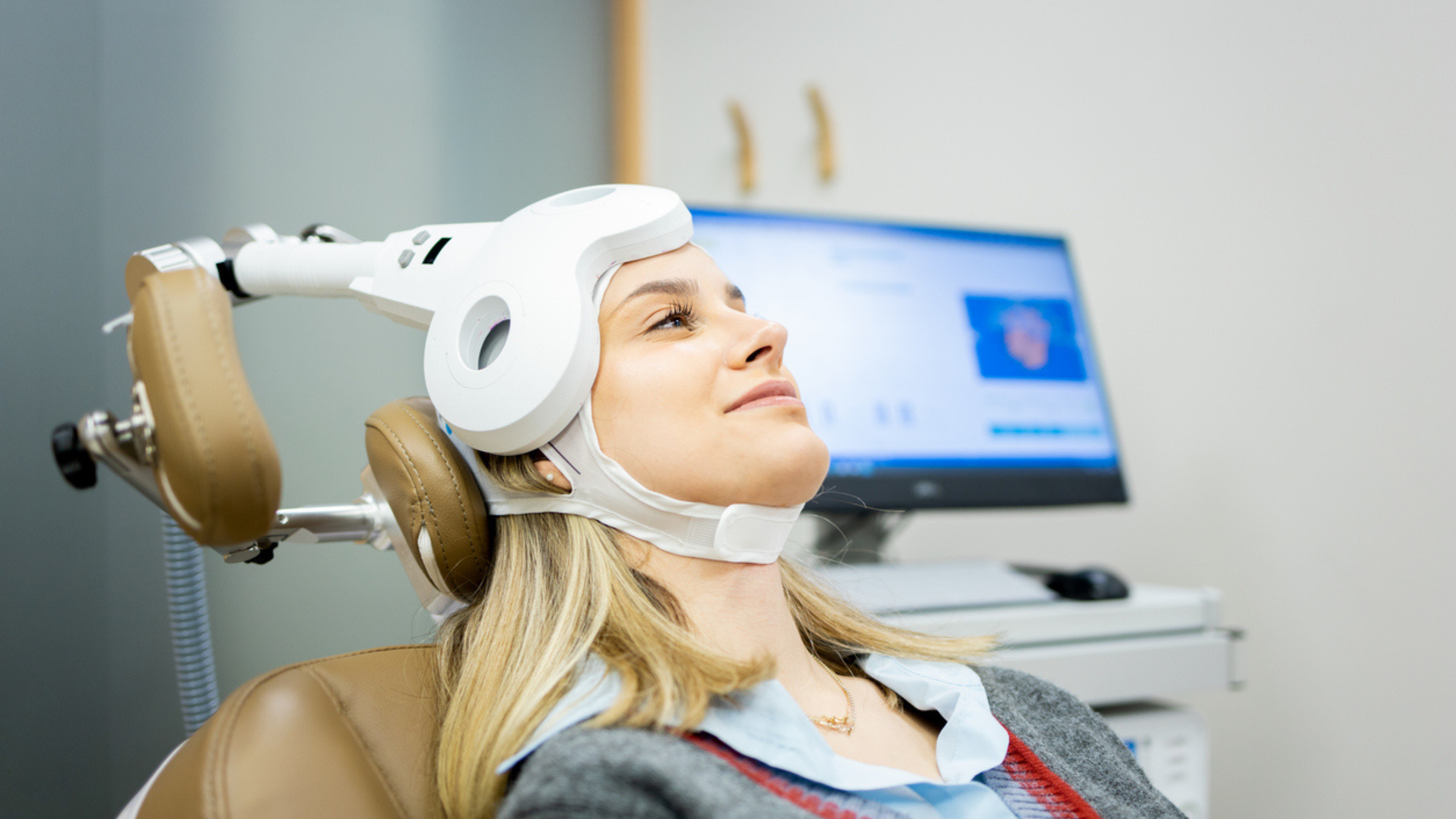Transcranial Magnetic Stimulation, or TMS, is an effective, safe, non-pharmacological approach to treat depression, anxiety, OCD, and smoking cessation by stimulating nerve cells in your brain. There are several different ways a mental health provider can administer TMS therapy, including deep TMS, accelerated TMS, repetitive TMS, theta burst stimulation, and many more. At A Better Day, we offer accelerated TMS therapy, which is a more novel TMS approach with improved outcomes, faster symptom relief, reduced treatment times, and equal tolerability to the older techniques.
What is Accelerated TMS Therapy?
Accelerated TMS therapy is most widely known from a study out of Stanford called the SAINT Study, or Stanford Accelerated Intelligent Neuromodulation Therapy. In this double-blind controlled study, researchers at Stanford University achieved remission for patients experiencing difficult to treat depression in 79% of their participants compared to 13% improvements in the sham group. They used iTBS (intermittent theta burst stimulation) sessions 10 times per day for 5 days (making the protocol accelerated compared to the typical 6-week course of 30 sessions), completing the entire treatment in a week. By increasing how many tms sessions are needed in the protocol while simultaneously decreasing the number of days needed for TMS, they achieved improved and faster outcomes for accelerated TMS for depression.
What Does Accelerated TMS Treatment Look Like?
At A Better Day Psychiatry, we utilize the exact same treatment parameters as the SAINT study. Our accelerated TMS involves receiving a 10-minute iTBS treatment every hour for 10 hours and repeating that for 5 days. The patient receives 50 treatments total within 5 days. If you would like to learn more about our process for TMS at A Better Day Psychiatry visit our TMS Treatment Page.
What Can Accelerated TMS Therapy Treat?
Accelerated TMS for Depression
Accelerated TMS therapy has currently only been studied for treatment resistant depression but there are ongoing studies to look into its efficacy for anxiety, PTSD, bipolar disorder amongst others. For depression, it works by delivering exciting neurons in the prefrontal cortex responsible for mood. In theory, it is more effective than standard TMS treatment protocols because it is delivering more pulses in a shorter duration of time.
There have been some promising studies showing accelerated TMS treatment may also improve OCD and migraines but similar to anxiety, PTSD, and bipolar, studies are ongoing for conditions besides depression.
How Many TMS Sessions Are Needed?
The number of TMS sessions needed depends on the condition being treated and which protocol is being used. Most TMS therapy protocols range from 30-36 sessions over 6-7 weeks. These more “standard protocols” are the most often covered by insurances and are therefore the most highly utilized treatment courses. Accelerated TMS may be viewed as more convenient since you complete 50 sessions within 5 days, however it is rarely if ever covered by insurance to this point.
When To Choose Accelerated TMS Therapy
At A Better Day Psychiatry, we strive to offer the most effective, lasting, and cutting-edge treatment options for patients, which is why we offer TMS. You may want to consider accelerated TMS if you have difficult to treat depression, have not responded well to medications or ECT, or do not tolerate or want to take medications. Accelerated TMS treatment offers faster symptom relief, reduced treatment times, improved convenience, and equal tolerability to standard TMS therapies. Our rates at ABD are found on our TMS Page. We also offer payment plans as well as financing options. Book a consultation today if you would like to learn more.

